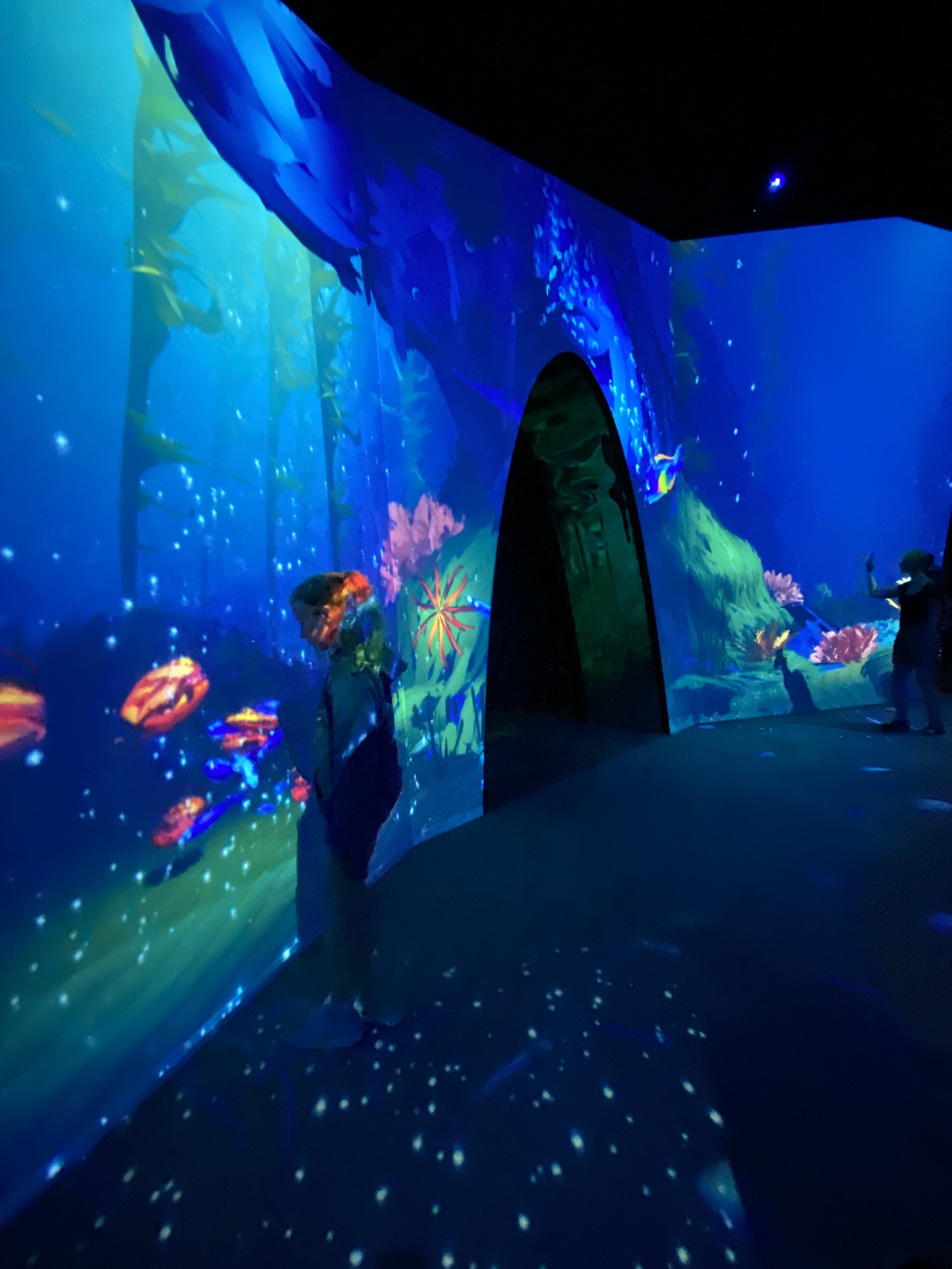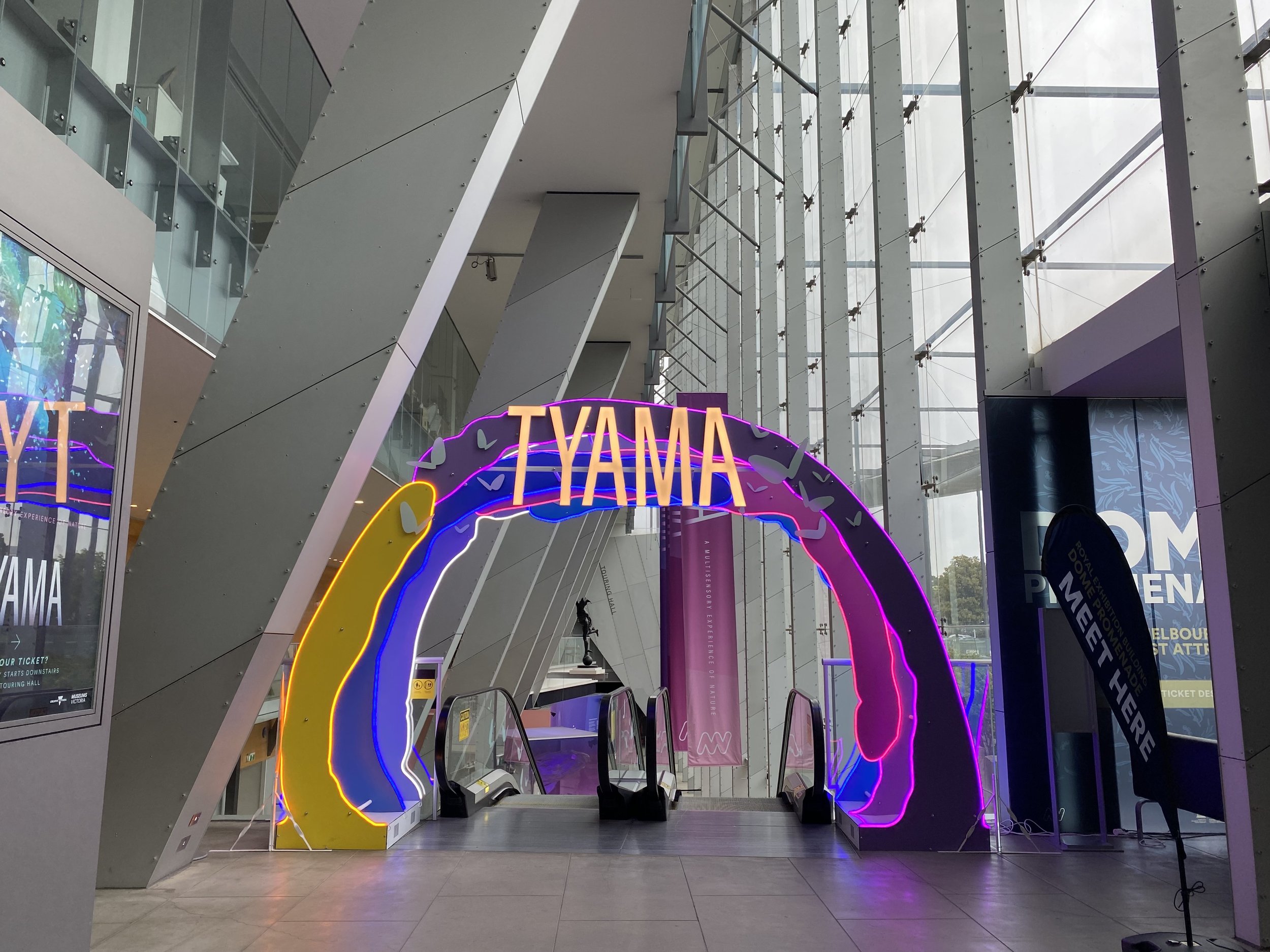MELBOURNE MUSEUM
In Melbourne, my family and I went to the Melbourne Museum. The first time we went it was just a rainy day and we wanted to check it out. We liked it so much that we decided to go again another day to explore what we didn't get to see the first time!
One of the largest exhibits was dedicated to the First Peoples of Australia. These were the Aboriginal people who were native to Australia, before the Europeans arrived. There are over 500 different Aboriginal tribes native to Australia. There were three parts of the exhibit; before, during, and after the Europeans arrived. Before they came, the Aboriginals had a good life. The vegetation was plentiful and there was plenty of food for them. They cared for their land and the land cared for them. But then one day they started to see ships coming closer and closer to their land. On the ships were white men. They had never seen white men before and they didn't know how much harm they would cause them. When the white men came to the mainland, they stole food, animals, clothing, people, and the land. Many native people were kidnapped, killed, or injured in these invasions, never to see their families again. One tribe in particular cared for the seals. They became friends with the seals. The Europeans wiped out the whole seal population in that area. Eventually over many, many years the Europeans were not as harsh to the Aboriginals as before. One thing that is so remarkable is that the Australian government officially apologized in 2008 to the Aboriginal communities. Now the Aboriginals are respected and part of Australian history. This exhibit was so powerful and so important.
Tyama was another exhibit visited. Tyama means to know or have a deeper understanding of country in the Keerray Woorroong language. Tyama is an interactive experience all about having a deeper understanding of country, which means to explore with different senses and a different way of looking at the place we call home.
In this exhibit we explored 3 rooms representing the sky, land, and water, as different animals. In the sky room, we were experiencing the environment as a moth would, pollinating flowers at nighttime. We learned about how moths use smell to find mates and pollinate flowers.
The next room, which was really just a hallway, we were bats. Bats use echolocation to get food at night. As we were walking we were instructed to clap, and as we did lights illuminated the hallway, which represented echolocation. Our last room was the fish room. We used movement to find ‘friends’ by stepping on projections of bubbles. The whole exhibit was about understanding the land and how what changes there, impacts everything.



My favorite activity, by far, was watching (another) movie about Antarctica at the IMAX theater. After we went to the International Antarctic Center in Christchurch, we wanted to learn more! This 45 minute movie took us on a journey through Antarctica. It was all about saving Antarctica and how what happens there impacts us all. It showed footage of seals, penguins, whales, and brutal snowstorms. The people who now go to Antarctica are there to save it but some years ago, people were there to go whaling and capture penguins and seals. Once there were 35,000 Right Whales, but the whalers killed so many of them that there were only 35 left. Luckily the population of right whales is increasing again, now up to 2,000 whales. This is good news because one whale absorbs so much carbon in its lifetime that it has the same positive effect on our environment as planting 4 Amazon forests! Incredible, right? If we kill whales we will be hurting the entire planet! This movie was so great, that I hope I get to visit Antarctica someday!
This museum was definitely one of my favorites ever. It helped me understand how much we take the earth for granted. We each have to respect and be kind to the earth. We each have a role in this world, and if we don’t fulfill it we could lose this place we call home.




